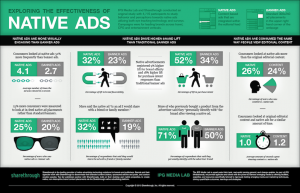As a small business owner, you rely on one simple equation to run your business.
Profit = Revenues – Expenses
In order to make money, your revenues (or sales) have to be higher than your expenses (or costs).
That sounds fine and dandy, but we all know making money is not as easy as just telling people to buy your stuff, or else you’d be bathing in cash right about now.
In reality, getting new customers requires a lot of work. It takes money to turn cold leads into warm leads. And these costs add up quickly, while revenues may or may not follow suit.
That’s why it is imperative to leverage your existing customer base. If your existing customers like what they bought the first time around, you should definitely give them a great reason to buy from you again.
With that in mind, here are 7 ways you can increase the profit of your business without getting a single new customer. If done right, they can bring in extra income that you might have been leaving on the table this whole time.
1. Raise Prices
A lot of small business owners are afraid that if they raise their prices, their customers will stop buying from them.
This might be true, but only if your product or service is such a commodity that you are competing purely on price. In this instance, your customers can and will go elsewhere to buy the exact same product.
But let’s say you’re a hair stylist, and you currently charge $ 20 for haircuts.
What would happen if you raised your prices to $ 22, or even $ 25? The most likely answer is that absolutely nothing would happen.
That’s because customers are very picky about choosing a hair stylist. Not only do they have to like the way a stylist cuts their hair, they also care about the stylist’s personality and salon’s cleanliness.
If your customers really like getting haircuts from you, the majority of them will stick with you even if you raise your prices.
That’s not to say you won’t lose any customers at all. But in this particular situation, the price increase should more than offset the customers you lose.
2. Offer Loyalty Discounts
It’s no secret that customers want to feel special. Something as simple as greeting people by name when they walk in the door can go a long way.
In addition, if you offer a decent loyalty program, your customers will be that much more incentivized to pay you a return visit.
Starbucks is a prime example of a company that has perfected the art of rewarding its customers, who in turn are fiercely loyal not only because of the Starbucks brand, but because they get free coffee all the time, including on their birthdays.
The good news is that you don’t have to be a behemoth like Starbucks to achieve the same results.
You can give your customers a “Buy 9, get 1 free” stamp card. You can offer a 10% coupon code on a receipt. You can offer discounts to customers who sign up for your mailing list.
The possibilities are endless. You just have to find the right one that works for you.
3. Start a Subscription Program
Subscriptions can work well if you sell a product that customers need to refill regularly.
For example, if you sell high quality supplements, you might entice existing customers by offering them a monthly subscription at a discount.
Your customers will be happy, because they no longer need to worry about going to the store when they run out of supplements.
You will also be happy, because there’s now a lesser chance that your customers will buy supplements from your competitors.
It’s a win-win for both sides.
4. Add New Products
You can always leverage your existing business by adding new products. Amazon started off by selling only books. Once it got good at selling books, it started selling other stuff.
It didn’t take Amazon that much more effort to sell new products. The infrastructure was already there. It just added merchandise that book buyers might also like, such as DVDs or electronics.
Before long, Amazon became the go-to online retailer for pretty much everything. You know the rest of the story.
Adding new products doesn’t have to be complicated. If you’re a hair stylist, it can be as simple as selling hair gel on the side. If your main product is a protein supplement for athletes, you can add another supplement that helps them burn fat.
This strategy can result in an immediate profit boost to your business. Just be careful. Don’t be so distracted by all these shiny new products that you forget about the core products that got you into business in the first place.
5. Evaluate Expenses
Now that we’ve gone through a few ways to increase your revenues without getting a single new customer, let’s talk about a couple of ways to decrease your expenses.
Every small business should think about whether it is being cost efficient. It’s not as easy to pull off as raising prices, but the resulting increase in profit can be just as significant.
This is especially true if you run a business that has perishable inventory, such as a café or a restaurant, where throwing away unsold food literally means throwing away cold, hard cash.
Evaluate your food waste for a week and see if you can spot a trend. If you find that you’re consistently throwing away too much food, you should easily be able to reduce the amount of food you buy and cook.
6. Cut Labor Costs
Are you spending too much money on your employees? Perhaps you’ve hired 3 people when 2 will suffice. Or perhaps you can outsource your work instead of hiring in-house.
If you’re a retail store and you notice slow foot traffic during the first and last hours of the day, maybe you can reduce the number of employees during those hours.
If you’re a small law firm, maybe it makes more sense to outsource administrative filing work to a temporary freelancer. It’ll save you a good chunk of money on taxes and insurance.
Admittedly, this is more difficult to evaluate. You want to keep your people happy so that they work hard for you. You want to give them enough hours to make their commute worthwhile. However, you have to make sure you don’t overspend on your employees and end up hurting your own profits.
7. Fire Bad Customers
The last way is probably also the hardest.
You might have this one customer who is never satisfied. You spend way too much time on him, and your blood pressure goes up every time you see a phone call or email from him.
You deal with him because he is a loyal customer. But just because a customer is loyal doesn’t give him the right to cost you more than it’s worth to keep him as a customer.
The extra time you’re spending stressing out about him could be spent helping out other, nicer, existing customers instead. If you’re spending too much time on this one bad apple, you very well could lose other customers that you actually want to help.
Conclusion
So there you have it. Increasing the profit of you business doesn’t have to be rocket science.
It’s worth mentioning again that you have to make sure your core product or service is solid. Because no matter how you go about trying to keep your existing customers, if they don’t like what they bought from you the first time around, nothing else really matters.
Business & Finance Articles on Business 2 Community
(149)




